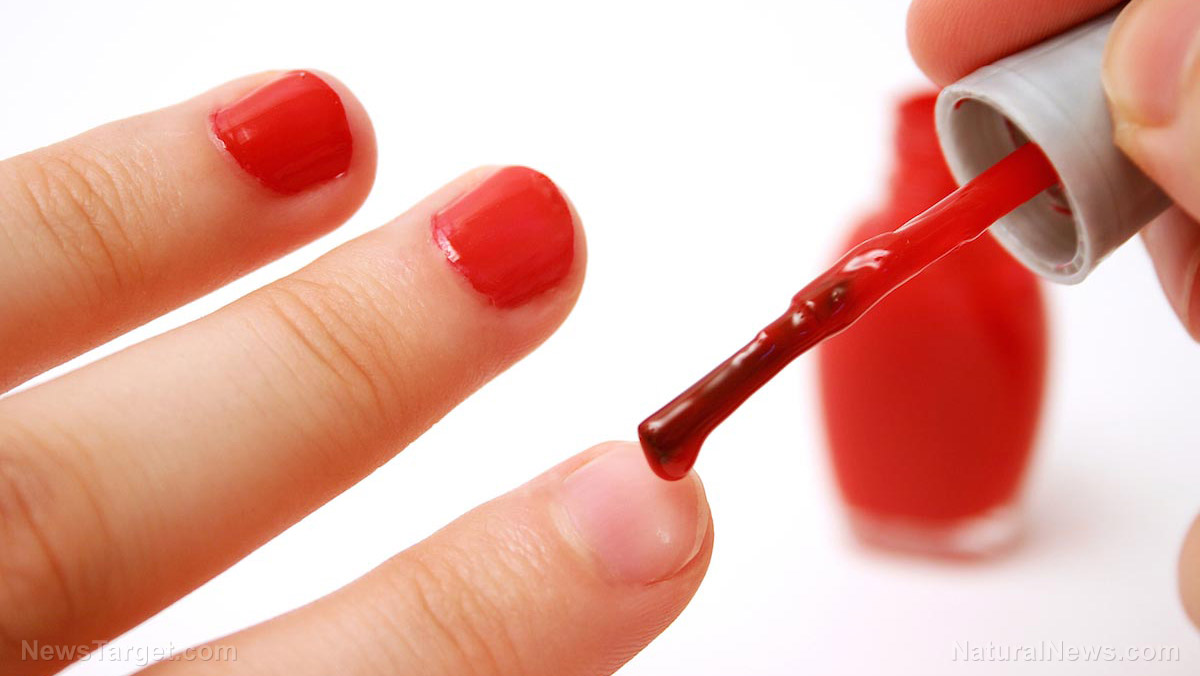New study finds that toxic chemicals found in nail polish enter women’s bodies just hours after application
02/09/2019 / By Ellaine Castillo

For many women, going to the salon to get their nails done is the perfect way to cap off a stressful week. It shouldn’t be a surprise then that the nail polish market is booming, as it rakes in more than $700 million every year. Unfortunately, the majority of commercially available nail polish still contains harmful chemicals that can find their way into the body. In a study by researchers from Duke University and Environmental Working Group, it was discovered that women exhibit signs of chemical toxins specifically derived from nail polish just hours after application.
The study, which was published in the journal Environmental International, evaluated 24 female participants for signs of chemical toxins. Results showed that all of the participants had the chemical triphenyl phosphate (TPHP) in their body within 10 hours of applying the nail polish. This was based on the observed seven-fold increase in the TPHP metabolite known as diphenyl phosphate (DPHP).
The Environmental Working Group estimates that more than 1,500 nail products containinh TPHP are on currently on the market. This is very alarming since the chemical has been shown to act as an endocrine disruptor and has been associated with reproductive and developmental problems in animal models. Moreover, TPHP, which is also used in the production of plastics and as a fire retardant, can contribute to weight gain and obesity.
Although most nail polish brands have their ingredients listed on the bottle, not all of them are completely honest with the information that they disclose. Because of this, the researchers also determined the TPHP content of 10 polishes. The results showed that there were eight polishes that contained the hormone-disrupting toxin. Of these, two did not include TPHP in their ingredients list.
According to the researchers, many nail polish manufacturers are now using TPHP as a replacement for phthalates, which has endocrine-disrupting properties and is toxic, especially to the reproductive system. However, the amount of evidence showing that TPHP also interferes with hormone production, metabolism, reproduction, and development suggests that it is not a better alternative.
Overall, the results of this study revealed that nail polish contains a hormone-disrupting chemical called TPHP that is rapidly absorbed by the body. Exposure to this chemical can lead to problems with metabolism, reproduction, and development. (Related: Nail polish users exposed to chemical linked to paralysis, reproductive disorders, study finds.)
Other toxic chemicals in nail polish
When purchasing nail polish, check its ingredients list first and make sure that it doesn’t contain any of the following toxic chemicals:
- Dibutyl Phthalate (DBP) — This chemical is a commonly used plasticizer that is added to improve polish durability so that it won’t chip easily. Studies have shown that DBP, as well as other phthalates, can mimic estrogen and act as endocrine disruptors. Exposure to this chemical can interfere with the hormonal development of male fetuses. Moreover, it has been associated with organ damage and early-onset menopause.
- Toluene — Toluene, a chemical commonly found in varnishes, glue, gasoline, and nail polish, can cause damage to a person’s nervous system. People who are constantly exposed to this chemical often suffer from nausea, dizziness, and irritation of the skin, eyes, and lungs. Pregnant women should also be more careful about toluene inhalation since it has been associated with birth and developmental defects.
- Formaldehyde — Exposure to large doses of formaldehyde has been shown to cause cancer of the throat, nose, and blood. Moreover, this chemical can increase the risk of health problems like asthma, convulsions, nausea, and even miscarriages.
- Camphor — Synthetic camphor is commonly used in nail polishes so that they would have their glossy, shiny appearance. Excessive exposure to the fumes of this chemical can cause nausea, dizziness, headaches, and disorientation. Meanwhile, topical application can trigger skin irritation as well as allergic reactions.
Read more news articles on harmful chemicals in everyday products by visiting Products.news.
Sources include:
Tagged Under: diphenyl phosphate, disease causes, DPHP, hormone disruptor, nail polish, products, toxic ingredients, toxins, TPHP, triphenyl phosphate, women's health


















